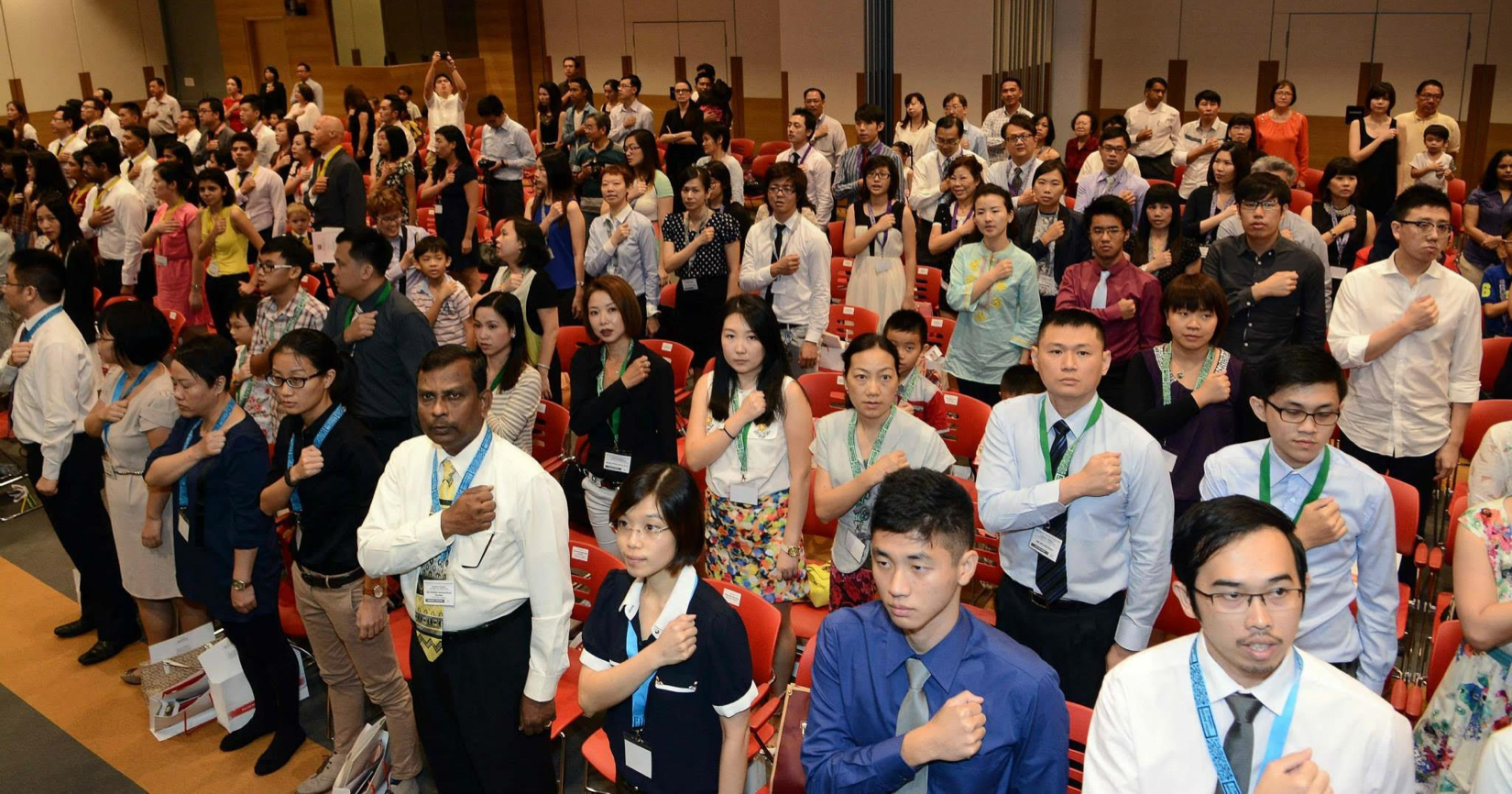On average, 22,100 new Singapore citizenships were granted per year for the past five years.
Minister in the Prime Minister's Office Indranee Rajah revealed the numbers in Parliament on Oct. 14, in response to questions on population statistics from Members of Parliament Poh Li San and Liang Eng Hwa.
Indranee pointed out that Singapore's Total Fertility Rate was 1.14 in 2019, which was unchanged from the previous year. This is below the rate needed for replacement.
The new Singapore citizenships also include 1,600 children born overseas to Singaporean parents every year, and there were 31,700 new permanent residents every year on average for the past five years.
Infrastructure planning to be reviewed according to population and economic needs
Indranee said:
"New citizens either share family ties with Singaporeans or have studied, worked, or lived here for some time. They are drawn from the pool of qualified PRs who eventually make the serious commitment to take on citizenship.
Citizenship and PR status are granted selectively to applicants who are committed to making Singapore their home, and who can integrate and contribute to Singapore."
She added that infrastructure planning does not only depend on demographics, but other factors such as climate change, land use for economic growth, and socio-economic trends.
The government will continue to monitor population trends and regularly review population policies along with infrastructure and social development needs to ensure that Singapore remains a cohesive society.
GST needed to cope with rising healthcare costs
In a follow-up question, Liang noted that ageing trends will impose a heavier tax burden on the working population, and asked how the government plans to mitigate that.
In response, Indranee acknowledged that Singapore faced dual challenges of an ageing population and a low fertility rate.
To tackle this, the government has put in place schemes to help each generation save for its own retirement needs. She cited CPF which helps to save for retirement, but also covers medical expenses and basic health insurance.
Indranee also said that funds have been set aside to help older Singaporeans, like the Merdeka and Pioneer packages.
But healthcare costs increase "exponentially" as one gets older. She said that annual healthcare spending is expected to rise from 2.1 per cent to 3 per cent of GDP over the next decade.
To cope with this, the government needs revenue. Indranee said that a key reason for introducing GST in 1994 was to obtain another source of revenue besides personal income tax. She said:
"So, you have to try and spread it out and make sure that you have some reliance on personal income taxes, but it's also necessary to have consumption taxes, such as GST and GST lessens the problem by balancing the taxation more broadly among the population."
Related story:
We deliver more stories to you on LinkedIn
Top image from Institute of Policy Studies. Photo taken in 2018.
If you like what you read, follow us on Facebook, Instagram, Twitter and Telegram to get the latest updates.
